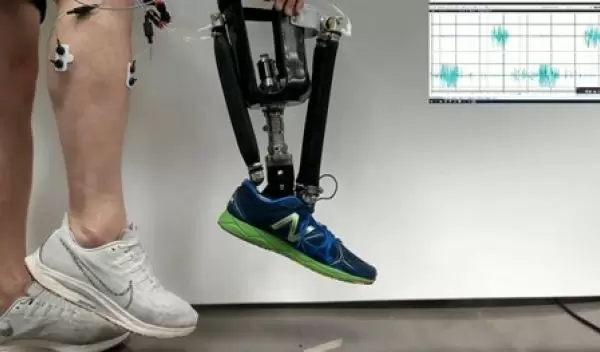
Robotic prosthetic ankles improve 'natural' movement, stability
Robotic prosthetic ankles controlled by nerve impulses allow amputees to move more "naturally," thereby improving their stability, according to a new study by researchers at North Carolina State University and the University of North Carolina at Chapel Hill.
The work was supported by the U.S. National Science Foundation; a paper on the study is published in Science Robotics.
"This research focused on 'postural control,' which is surprisingly complicated," says Helen Huang, corresponding author of the study and a biomedical engineer at NC State and UNC. "When we are standing still, our bodies are constantly making adjustments to keep us stable. For example, if someone bumps into us when we are standing in line, our legs make movements that we are not necessarily even aware of to keep us upright."
The new study builds on previous work demonstrating that neural control of a powered prosthetic ankle can restore a range of abilities, including standing on challenging surfaces and squatting.
The researchers worked with five people who had amputations below the knee on one leg. Study participants were fitted with a prototype robotic prosthetic ankle that responds to muscular signals picked up by sensors on the leg. Participants were then tasked with responding to an "expected perturbation" under two conditions: using the prosthetic devices they normally used and using the robotic prosthetic prototype.
Study participants were significantly more stable when using the robotic prototype.
The researchers are now conducting a larger trial with a larger number of participants.
